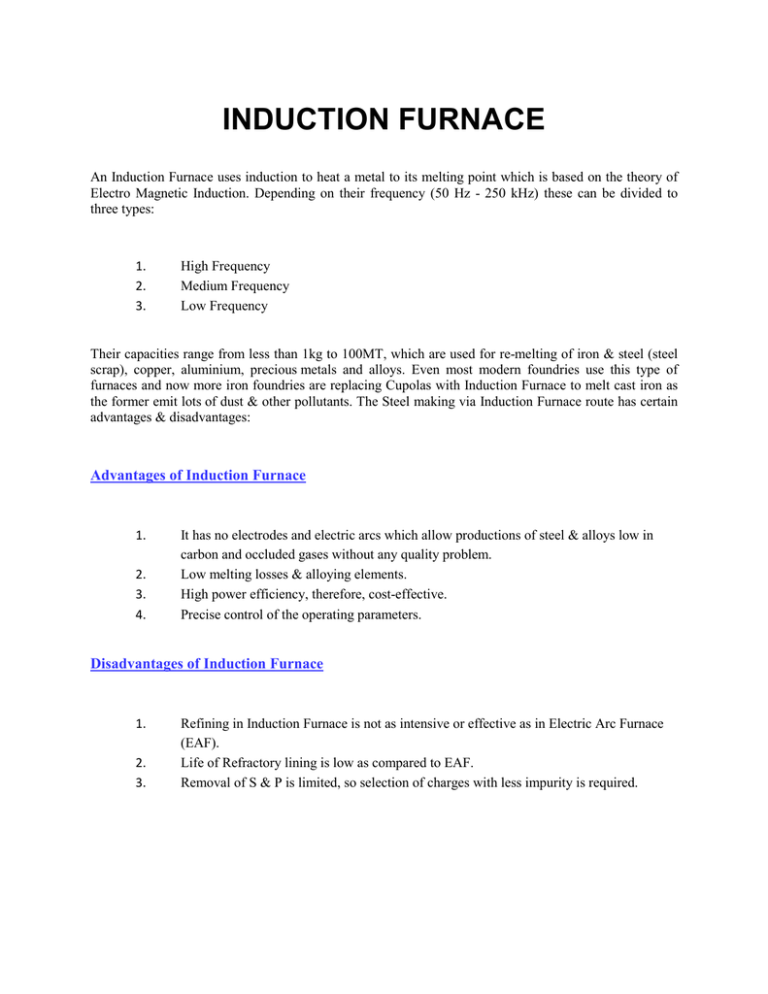INDUCTION FURNACE
advertisement

INDUCTION FURNACE An Induction Furnace uses induction to heat a metal to its melting point which is based on the theory of Electro Magnetic Induction. Depending on their frequency (50 Hz - 250 kHz) these can be divided to three types: 1. 2. 3. High Frequency Medium Frequency Low Frequency Their capacities range from less than 1kg to 100MT, which are used for re-melting of iron & steel (steel scrap), copper, aluminium, precious metals and alloys. Even most modern foundries use this type of furnaces and now more iron foundries are replacing Cupolas with Induction Furnace to melt cast iron as the former emit lots of dust & other pollutants. The Steel making via Induction Furnace route has certain advantages & disadvantages: Advantages of Induction Furnace 1. 2. 3. 4. It has no electrodes and electric arcs which allow productions of steel & alloys low in carbon and occluded gases without any quality problem. Low melting losses & alloying elements. High power efficiency, therefore, cost-effective. Precise control of the operating parameters. Disadvantages of Induction Furnace 1. 2. 3. Refining in Induction Furnace is not as intensive or effective as in Electric Arc Furnace (EAF). Life of Refractory lining is low as compared to EAF. Removal of S & P is limited, so selection of charges with less impurity is required. Induction Furnaces are classified generally into two categories: 1. 2. Channel type induction furnace Coreless type induction furnace Fig.- CHANNEL TYPE INDUCTION FURNACE 1. Channel Type Induction Furnace These furnaces basically consist of a vessel to which one or more inductors are attached. The inductor is actually a transformer whereby the secondary winding is formed with the help of a loop of liquid metal confined in a closed refractory channel. In the furnace the energy is transformed from the power system at line frequency through a power supply to the inductor and converted into heat. One advantage of this type of furnace is that the vessel or upper case can be built in any practical size & shape to suit the application, but the disadvantage are like a. Power input limitation per inductor. b. Necessity to maintain a liquid heel in the furnace always to avoid problems related to operational parameters and refractories. For the above reasons Channel type Induction furnaces (Fig.) are treated as a receiver or holding vessel for homogenization of liquid metal with limited capability of melting. Fig.- CORELESS TYPE INDUCTION FURNACE 2. Coreless Type Induction Furnace These furnaces (Fig.) are designed like a cylindrical crucible surrounded by a power coil in which energy is supplied either directly from the network (line frequency) or through a frequency converter. The magnetic field generated by the coil carries the energy to the charge Source : http://viewforyou.blogspot.in/2008/10/induction-furnace.html



